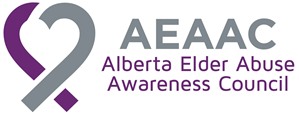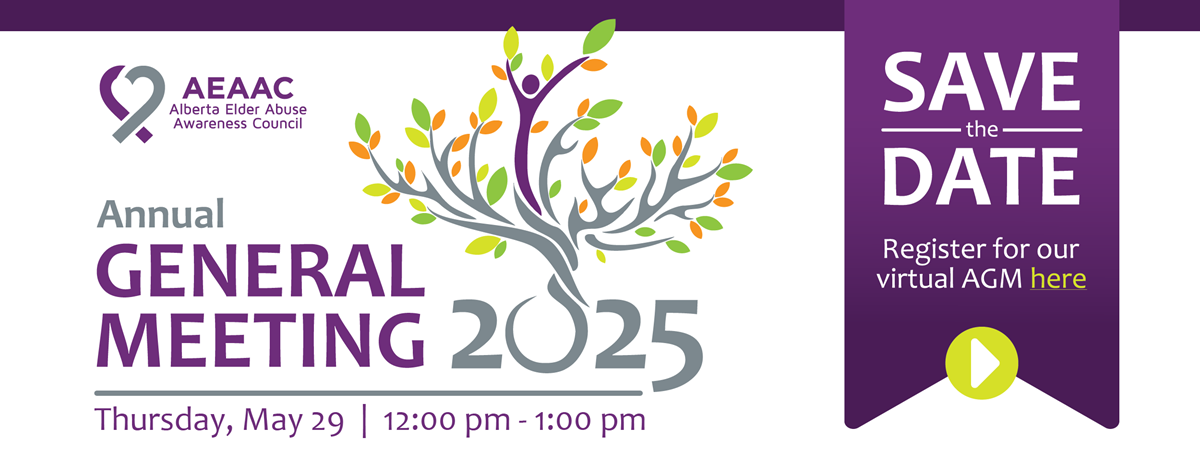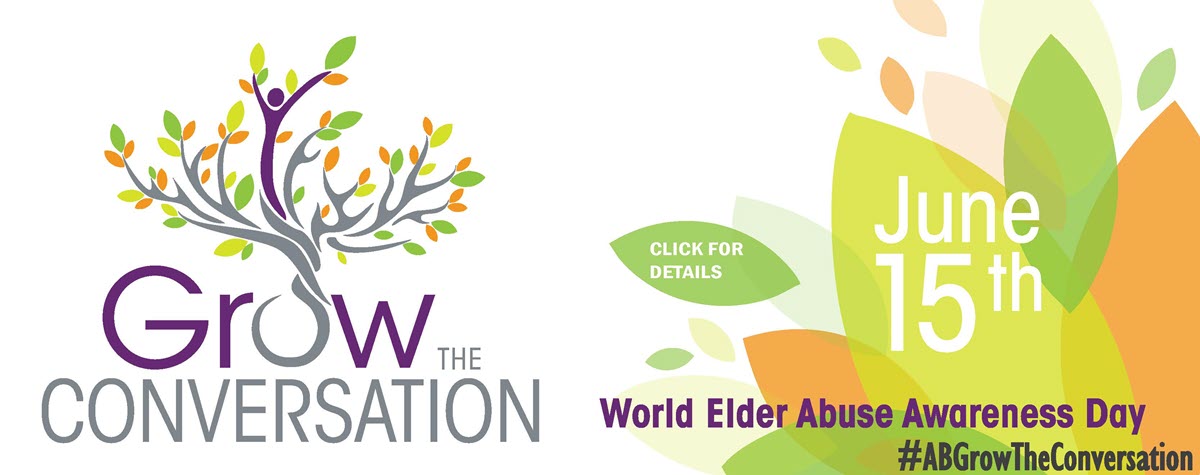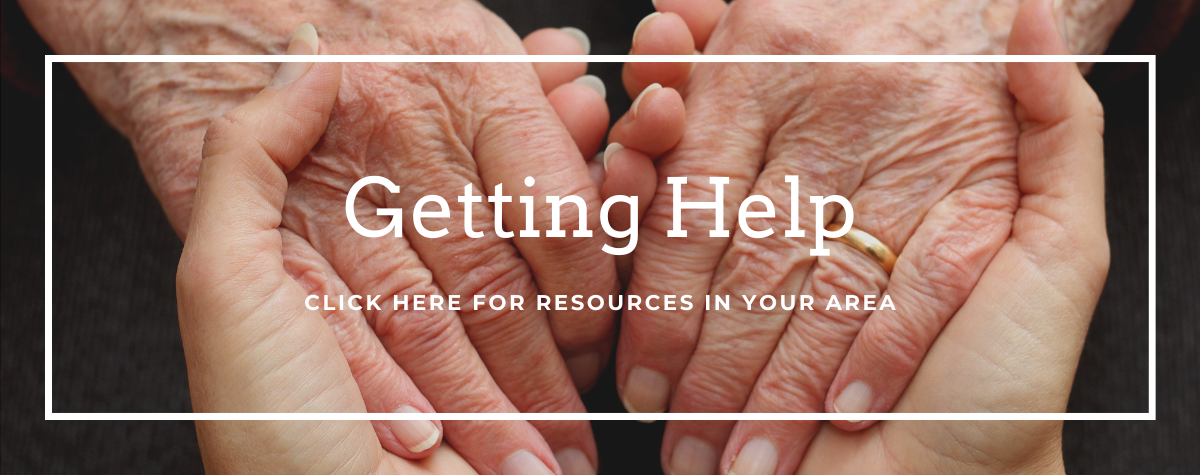Laws that are most applicable to older adults and abuse can be found in a variety of statutes, both federal and provincial. Where an elderly person is being abused physically, financially, and sometimes psychologically the Criminal Code of Canada sets out offences that may include the actions being taken against the older adult.
Statutes are written laws that have been approved by the established legislative process. Federal statutes are referred to as Statutes of Canada. Provincial statutes such as that of the province of Alberta are referred to as the Statutes of Alberta.
For information and resources that will give you a general understanding of legal issues around elder abuse and possible action, please visit Oaknet by clicking the following link:
Older Adult Knowledge Network: http://www.oaknet.ca/
Revealing Abuse
Whether a victim is unable or unwilling, some of the barriers to revealing elder abuse include:
Fear
- of being punished for reporting
- of institutionalization
- of rejection or abandonment by other family members
- of losing their caregiver
- of losing access to family members, including grandchildren
- that the disclosure will reflect poorly upon their family
Love for the Abuser
The senior may care deeply for his/her abuser, leading to conflicting feelings about revealing the abuse. The victim is likely reluctant to see the abuser criticized or face consequences for the behavior.Lack of Understanding or Impairment
A victim may be unable to report the abuse because of cognitive impairment or other disability. A mental impairment or inappropriate medication may also keep a victim from revealing the abuse.Shame and /or Guilt
Victims of elder abuse often blame themselves for violence and neglect they are subjected to. They are often reluctant to report the abuse because they are ashamed of what the family member did to them or embarrassed that they placed their trust in that person. The senior may also believe that it was something they did that brought on the abuse.Unaware of Resource Options
Victims are often unaware of the community supports and services available to assist them.Acceptance of Abuse or Neglect as Normal
If abuse has been a prevalent or typical pattern of behavior in a family, both the abusers and the victims may accept it as "normal" behavior. For many victims suffering at the hands of an abuser, violence and neglect are simply a way of life. Additionally, as violence is an accepted form of expressing rage in our society, the abuse may be dismissed and go unreported by others.Source: Edmonton Elder Abuse Intervention Team Abuse and Neglect of Older Adults - Resource and Training Kit for Service Providers, Health Canada 1994
Theories of Abuse
Like other types of domestic violence, elder abuse is extremely complex. It is a combination of many factors, from psychological to economic as well as the mental and physical conditions of the victim and the abuser. These factors do not usually operate in isolation. Instead, they tend to function as complex dimensions, interacting in ways uniquely dependent on the victim, perpetrator and the situation.
Research into elder abuse is in its early stages. However, a few theories are emerging that address the cause of elder abuse. These include:
Learning Theory
Learning theory or transgenerational violence theory is based on the belief that violence is a learned behavior pattern. A child observes violence as an acceptable reaction to stress and then internalizes this as an acceptable behavior. In cases of elder abuse, violent behavior becomes cyclical: the abused – the child - becomes the abuser of the parent.In the case of spousal abuse, when spouse who has been the abuser becomes ill or disabled the previously abused partner may retaliate and become the abuser.
Physical/Mental Dependence (Impairment)
This theory is based on the belief that elderly persons who have a severe mental or physical impairment are most vulnerable to becoming abused. In relationships where one person is dependent and another person is the helper or caregiver, there is always potential for misuse of power by the caregiver.Pathologic Abusers
This theory focuses on the abusers having personality flaws or character flaws that cause abusiveness. Caregivers with the following qualities tend to be far more likely to be abusive:- drug and/or alcohol abuse/addiction
- mental incapacitation or mental illness
As caregivers, people facing these challenges are often lacking the decision making capacity to make appropriate judgments for the elderly people in their care. In spite of this, they are thrust into this role.
Stressed Caregiver
Caring for an older adult, especially one who suffers from a mental or physical impairment is highly stressful. The stressed caregiver theory proposes that the mounting internal stress and/or external pressure that come with providing care for the elderly can erupt in violence. If a caregiver feels there is no relief or escape from this stress, abuse may occur.Societal Attitudes
This theory is based on the belief that certain societal attitudes toward older people make it easier for abuse to occur without remorse on the part of the caregiver. These attitudes can also reduce the likelihood of outside detection or intervention. Negative attitudes can lead to devaluation and lack of respect for older people, who are often stereotyped as frail, incompetent and powerless. When regarded in this way, there can be a societal failure to recognize the importance of assuring dignity, support and safety for every older person.Source: Golden Years Hidden Fears, Virginia Boyack, (1997)
Abuse In Canada
As part of the 1999 GSS, 4000 older Canadians were interviewed to examine their experience regarding emotional and financial abuse as well as physical and sexual violence committed against them by children, caregivers and spouses. The following results were reported:
- approximately 7% of seniors interviewed reported that they had experienced some form of emotional or financial abuse by an adult child, caregiver or spouse within the past five years
- emotional abuse was reported most frequently
- financial abuse was the second most reported form of abuse
- almost 2% of older Canadians reported experiencing more than one form of abuse
What are the implications for older Albertans today?
Applied to Alberta's current senior population, these statistics tell us that approximately 23,000 Alberta seniors are experiencing one or more forms of abuse.We know that there are many barriers to disclosure and that abuse of older adults is not readily identified by service providers or community members. (Abuse and Neglect of Older Adults- Community Awareness and Response, 2001, p.23).
We know that our population is aging quickly. The Alberta for All Ages - Directions for the Future report stated that "between 1999-2016 the Alberta seniors' population will increase 60-70%, while the general population will only grow by 30%."
The implication from these statistics is painfully clear: unless we take action through awareness and prevention, the prevalence of elder abuse will continue to grow.
What are the costs of family violence in Canada?
Measuring the economic impact of violence allows us to examine the issue from another vantage point. This data provides us with valuable information when planning prevention and intervention efforts.
Health & Well-being $1.5 billion
Social Services/Education $2.3 billion
Criminal Justice $872 million
Labour/Employment $577 million
Health/Medical $408 million
Social Programs $385 million
Total Cost $6 billion
(Sources: Centre for Research on Violence Against Women and Children, The Health Related Costs of Violence Against Women in Canada : The Tip of the Iceberg. Tanis Day Ph. D., 1992, 1995)
While these statistics speak to the enormous social price tag of family violence, it is critical that we not forget that economic facts do not measure:
- the human cost of emotional suffering
- decreased quality of life
- in some cases the loss of life
Ethno-Cultural Communities
Language Barriers
An inability to communicate in the dominate language could leave a senior especially defenseless against abuse and exploitation. Language barriers can augment both dependence and isolation, making disclosure much more difficult and obtaining access to services significantly more challenging.Social Isolation
Ethno-cultural seniors can find themselves socially isolated resulting from language barriers, physical limitations or unfamiliarity with surrounding communities. This sense of isolation heightens their vulnerability to abuse. The absence of a social network can also make abuse easier to hide and seniors in this group are much less likely to have the social confidence or connection to seek the help they need.Financially Dependant
Some ethno-cultural seniors lack a livable savings or a pension. As a result, it is easy for them to become financially dependent on their children or caregivers. The result is an increased risk for potential neglect or exploitation.Emotionally Dependant
Ethno-cultural seniors may be particularly at risk of becoming emotionally dependent on those closest to them. Family members or caregivers can manipulate this relationship with threats such as withdrawing sponsorship. Fear of abandonment, deportation and institutionalization can become enormous deterrents to disclosing abuse. These fears are often rooted in a lack of understanding of their legal and human rights or a fear of the Canadian Justice System.Cultural Factors
Cultural taboos against revealing "private" family issues can create barriers to escaping elder abuse. Almost all seniors are reluctant to 'bring shame' to their families, but certain ethno-cultural beliefs and values can make seniors feel bound to silence rather than reveal matters that might cause themselves or their family members shame or embarrassment.Source: Abuse in Ethno-cultural & New Immigrant Communities – Department of Community Service Government of Nova Scotia
What is Elder Abuse?
Any action or inaction by a person(s) in a trusting relationship that causes harm and distress to an older adult.
Types of Elder Abuse
Elder abuse can take several forms, often with more than one type of abuse occurring at the same time for individuals. National and provincial statistics indicate that the two most identified and reported types of elder abuse are financial and psychological.
Financial Abuse
This is "the misuse of an older person's funds or property through fraud, trickery, theft or force." It can include, but is not limited to:
- the misuse of money or property
- convincing an older person to buy a product or give away money
- stealing money or possessions
- misusing bank or credit cards
- misusing joint banking accounts
- forging a signature on pension cheques or legal documents
- misusing a power of attorney
Psychological or Emotional Abuse
This may take the form of verbal aggression, humiliation, isolation, intimidation, threats and inappropriate control of activities. In all cases, it diminishes the identity and self-worth of older people. It can also provoke intense fear, anxiety or debilitating stress.
It can include, but is not limited to:
- removal of decision-making power while the person is competent
- withholding affection for manipulative purposes
- refusing access to grandchildren
- denying privacy in institutions
- forcing older people to do degrading things
- controlling activities
- treating them like children
- attacking their self-esteem
- intentionally frightening them
Physical Abuse
Physical abuse is the use of physical force causing discomfort which may or may not result in bodily injury, physical pain, or impairment. Older persons who are subjected to rough handling or mistreatment are the victims of physical abuse.
It can include, but is not limited to:
- slapping
- shaking
- pushing
- kicking
- punching
- striking with an object or weapon
- deliberate exposure to severe weather
- unnecessary physical restraint
- forced confinement
- failure to provide adequate health care
Sexual Abuse
All unwanted forms of sexual activity, behaviour, assault or harassment to older persons is elder sexual abuse.
It can include, but is not limited to:
- verbal or suggestive behavior
- fondling
- unwanted sexual intercourse
- lack of personal privacy
- being forced to commit degrading acts
- unnecessary help with dressing/hygiene
Neglect
This is the intentional or unintentional failure to provide for the needs of someone. Neglect can be active (intentional) or passive (unintentional) and has the effect of failing to provide older persons with basic necessities or care.
It can include, but is not limited to:
- failure to provide a safe, warm and comfortable place to live
- denial of social contacts and/or interaction
- failure to provide personal hygiene
- failure to provide proper food or clean clothing
- failure to provide aids for daily living, (hearing aids, walkers, canes, wheelchairs, etc.)
- failure to prevent physical harm
- abandonment or desertion
Self-neglect, while not technically considered abuse, is also a significant concern. It involves cases whereby, older adults, by choice or ignorance, live in ways that disregard their health or safety needs and can in some cases pose a hazard to others.
Medication Abuse
This is the misuse of an older person's medications and prescriptions.
It can include, but is not limited to:
- withholding medication
- overmedicating
- sedation
- not complying with prescriptions refills
Source: Abuse and Neglect of Older Adults - Resource and Training Kit for Service Providers, Health Canada 1994











